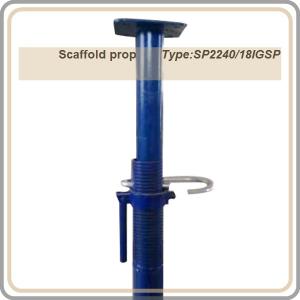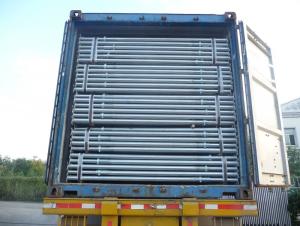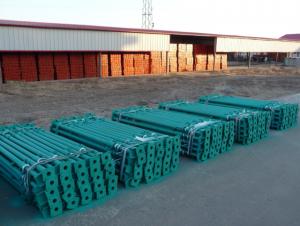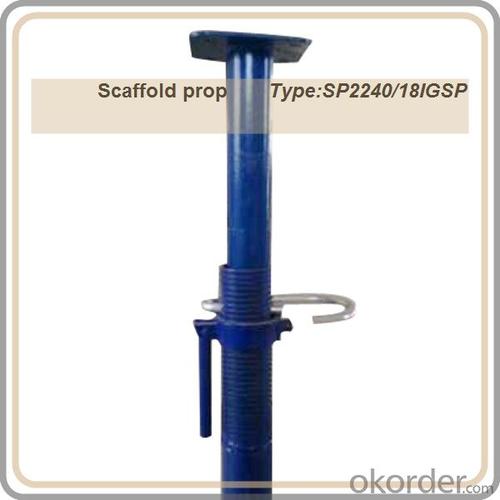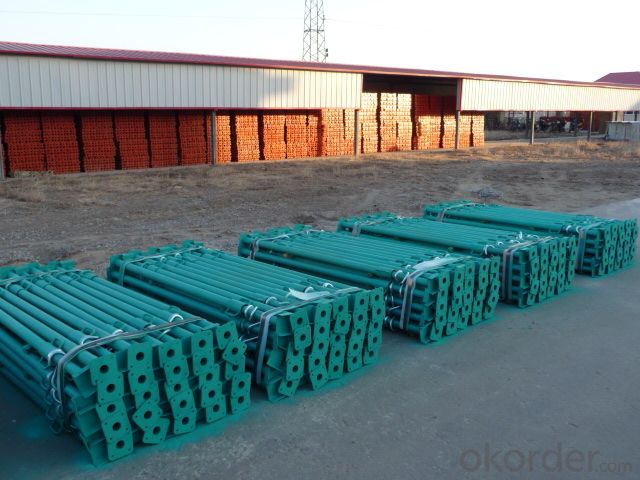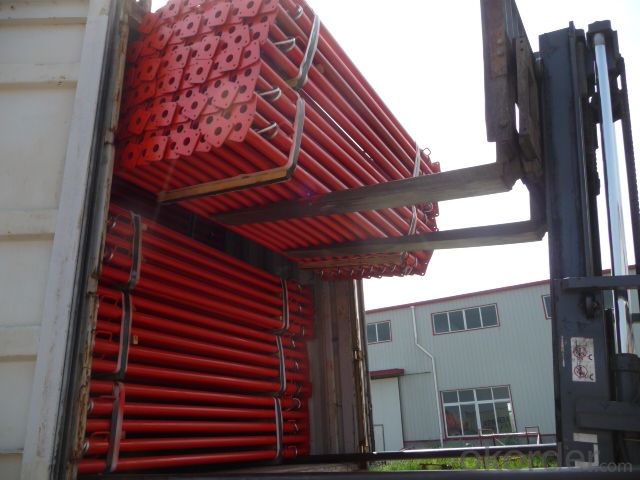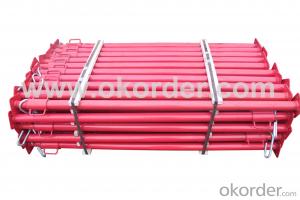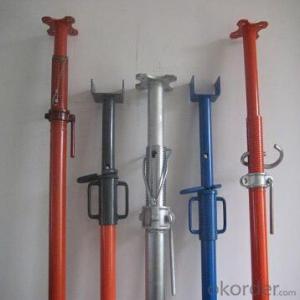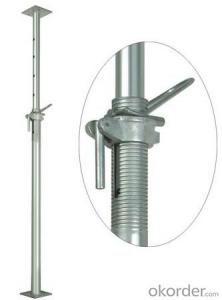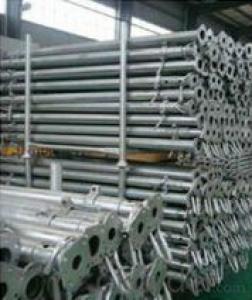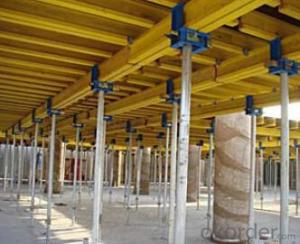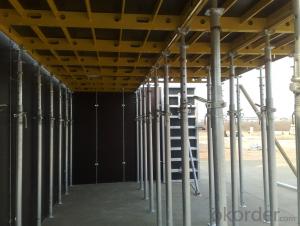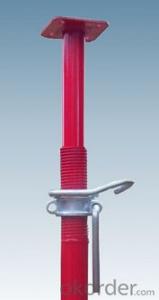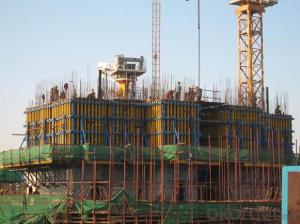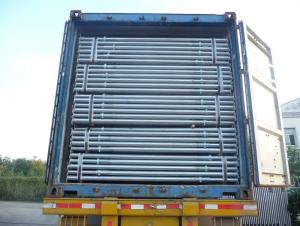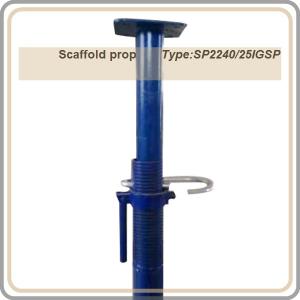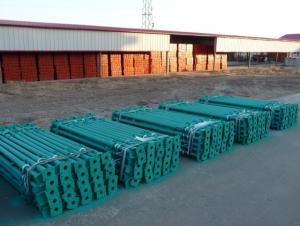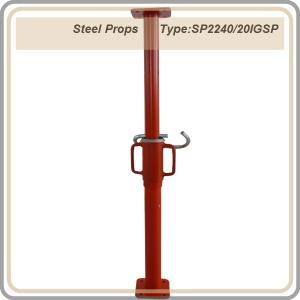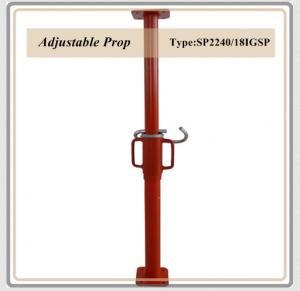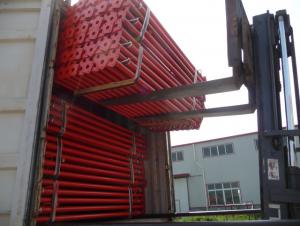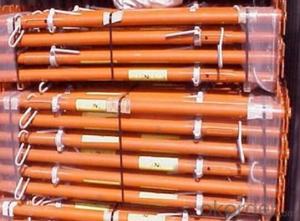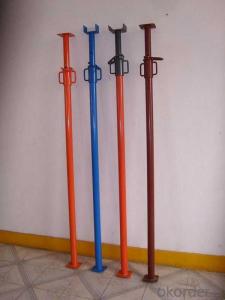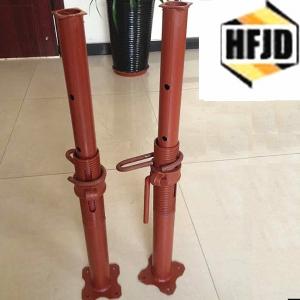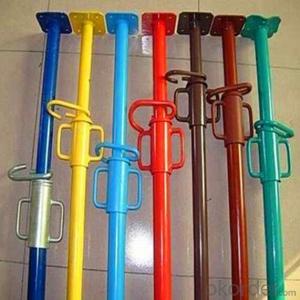Export Scaffold props /painted surface steel prop / telescopic steel prop / blue color prop 2.2-4M
- Loading Port:
- China Main Port
- Payment Terms:
- TT or LC
- Min Order Qty:
- 1680 Piece/Pieces 1680pcs / 20'FT container pc
- Supply Capability:
- 10000 pc/month
OKorder Service Pledge
OKorder Financial Service
You Might Also Like
1. Length 2200-4000mm
2. Outer tube diameter 56mm
3. Inner tube diameter 48mm
4. Tube material : Q235
5. Tube thickness : 1.8mm
6. weight : 10kgs
7. square plate : 120*120*4mm
8. Italian type nut
9. G-pin 12
10. Painted surface
11. Color : as customer 's request . red / blue / green / orange/ brown
Packaging & Delivery
| Packaging Details: | packaging :50pcs / bale container : 1680pcs / 20ft |
|---|---|
| Delivery Detail: | 20-30days after receive deposit |
Specifications
Adjustable props / construction prop
Height 2.2-4M
Italy type painted props
Adjustable props
Shoring props
Construction scaffold steel prop
Scaffold props
Telescopic steel props
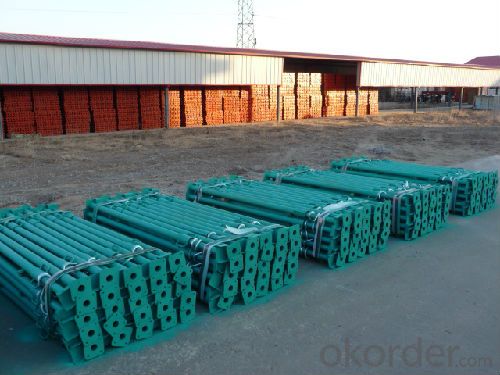
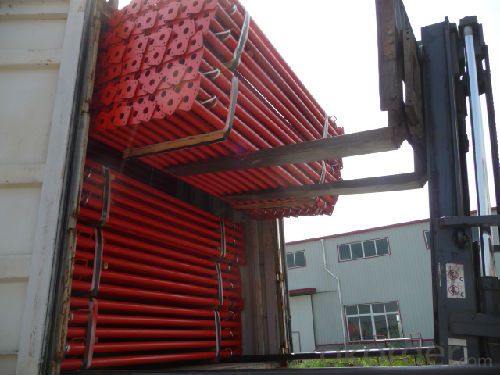

Product introduce
Steel Prop is a labour and time saving device to support shuttering and centering.
It is made outer tube of 60mm (O. D.) & inner pipe of 48mm (O. D.)
or outer tube 56mm (O.D.) & inner pipe 48mm (O.D.) ,
or outer tube 48mm (O.D.) & inner pipe 40 mm (O.D.) moving in each other telescopically.
The surface has painted , powder , electric galvanized and hot dipped galvanized .
The height use of props by double staging is recommended upto 7000mm only .
Top and bottom plate are provided with nail holes for wooden beam or steel beam .
The top has square shape , flower shape or U-head , U-fork head .
U-head can use fix or adjustable .
- Q: Are steel props suitable for supporting heavy loads?
- Steel props are indeed suitable for supporting heavy loads. Specifically, they are adjustable steel columns utilized in construction projects to provide temporary support for structures like beams, slabs, and formwork during construction or renovation endeavors. Made from top-notch steel, these props possess outstanding strength, durability, and load-bearing capacity. Notably, they are capable of supporting hefty loads and can be conveniently adjusted to the desired height and angle. Moreover, steel props come equipped with a broad base plate at the bottom, ensuring stability and preventing sinking or tilting when faced with significant loads. All in all, when it comes to supporting heavy loads in construction projects, steel props are an extremely dependable and efficient choice.
- Q: Are steel props adjustable in both lateral and vertical directions?
- Yes, steel props are adjustable in both lateral and vertical directions. They can be extended or retracted to achieve the desired height and can also be tilted or angled to provide lateral support as needed.
- Q: What are the different surface finishes available for steel props?
- Some of the different surface finishes available for steel props include galvanized, painted, powder coated, and bare steel.
- Q: Can steel props be used for temporary support in stadium roof construction?
- Yes, steel props can be used for temporary support in stadium roof construction. Steel props are commonly used in construction projects to provide temporary support to structures such as walls, beams, or roofs. They are adjustable and can be easily installed and removed as needed. Steel props are strong, durable, and can withstand the weight and pressure of the roof during construction. They provide stability and support, ensuring the safety of the workers and the integrity of the structure.
- Q: Can steel props be used for temporary support in airport runway construction?
- Steel props, also referred to as Acrow props or adjustable steel props, have the capability to serve as temporary support in airport runway construction. They are extensively utilized in construction ventures to provide momentary stability and support to structures. These props are designed with the flexibility to easily adjust their height and bear substantial loads. In the context of airport runway construction, steel props can be employed to bolster formwork and scaffolding throughout the construction process. By doing so, they contribute to the preservation of the construction site's structural integrity and the well-being of workers. The adaptability of steel props allows them to be utilized in diverse construction applications, including civil engineering projects such as airport runway construction. However, it is crucial to ensure that the steel props utilized adhere to the necessary safety standards and are installed correctly by competent professionals.
- Q: Are steel props resistant to rust and corrosion?
- Steel props are typically resistant to rust and corrosion. The durability and strength of steel make it well-known, and with proper coating or treatment, it can endure the elements and fend off corrosion. Nevertheless, it is crucial to regularly inspect and maintain steel props to guarantee their ongoing resistance to rust and corrosion. Consistent cleaning, painting, and the application of protective coatings can aid in prolonging their lifespan and thwarting the formation of rust or corrosion.
- Q: What are the common applications of steel props?
- Steel props, also known as adjustable steel props or steel shore props, are widely used in construction and building projects. These props provide temporary support to various structures during construction or renovation. Here are some common applications of steel props: 1. Formwork Support: Steel props are extensively used to support formwork structures during the casting of concrete. They provide stability and load-bearing capacity, ensuring the formwork stays in place until the concrete sets. 2. Slab and Beam Support: Steel props are commonly employed to support slabs and beams during construction. They help distribute the load evenly, preventing any potential sagging or collapsing of the structure. 3. Shoring and Scaffolding: Steel props are an essential component of shoring systems used to stabilize and support excavations, trenches, and walls. They help prevent soil movement and maintain structural integrity during earthworks and foundation construction. 4. Temporary Supports: Steel props are utilized as temporary supports when removing load-bearing walls, columns, or beams during renovation or alterations. They provide a secure and adjustable solution to ensure the remaining structure remains stable while the modifications take place. 5. Temporary Roof Supports: Steel props are commonly used to provide temporary support to roofs during repairs or construction. They help maintain the structural stability of the building, especially in cases where the existing roof structure has been compromised. 6. Mezzanine and Raised Floor Support: Steel props are employed to support mezzanine floors and raised platforms, providing stability and load-bearing capacity. They help distribute the weight of the floor and any additional loads to the foundation or lower level. 7. Pipe and Duct Support: Steel props are used to support pipes, ducts, and other utilities during installation or maintenance. They prevent sagging or movement of these systems, ensuring they are properly aligned and supported. In summary, steel props find wide-ranging applications in construction projects, including formwork support, slab and beam support, shoring and scaffolding, temporary supports, temporary roof support, mezzanine and raised floor support, and pipe and duct support. Their adjustable nature, load-bearing capacity, and versatility make them a reliable choice for providing temporary support during various construction activities.
- Q: Are there any safety precautions to consider when using steel props?
- Yes, there are several safety precautions to consider when using steel props. Firstly, it is important to ensure that the props are properly installed and secured to prevent any instability or collapse. Regular inspections should be conducted to check for any signs of damage or wear. Additionally, it is crucial to follow the manufacturer's guidelines and weight limits to avoid overloading the props. Adequate training and supervision should be provided to workers to ensure they are aware of the proper usage and potential hazards. Finally, it is essential to have a clear evacuation plan in case of emergencies and to provide personal protective equipment to minimize the risks of injury.
- Q: Can steel props be used in both indoor and outdoor construction projects?
- Yes, steel props can be used in both indoor and outdoor construction projects. Steel props, also known as adjustable steel props or steel acrow props, are versatile and durable support structures used to provide temporary support to ceilings, walls, beams, and other structures during construction or renovation. One of the key advantages of steel props is their ability to withstand various weather conditions, making them suitable for both indoor and outdoor projects. Whether it is a construction site exposed to rain, snow, or extreme temperatures, or an indoor renovation project within a controlled environment, steel props can be relied upon to provide the necessary support. Moreover, steel props are adjustable in height and can be easily extended or retracted to accommodate different construction requirements. This flexibility allows them to be used in a wide range of indoor and outdoor applications, such as supporting formwork, scaffolding, or providing temporary support to damaged structures during repairs. Additionally, steel props are made from high-quality steel, ensuring their strength and stability. They are designed to bear heavy loads and provide reliable support, making them suitable for various construction projects, regardless of the location. In conclusion, steel props are a versatile and durable support system that can be used in both indoor and outdoor construction projects. Their ability to withstand different weather conditions, adjustable height, and strength make them an ideal choice for providing temporary support during construction or renovation works.
- Q: How are steel props adjusted for different heights?
- Steel props can be adjusted for different heights by using a threaded mechanism. The prop consists of an inner tube and an outer tube with multiple holes. By rotating the inner tube and aligning the desired hole with a pin, the prop can be set at the desired height. The pin locks the tubes together, ensuring stability and load-bearing capacity. This adjustable feature makes steel props versatile and suitable for various construction applications.
Send your message to us
Export Scaffold props /painted surface steel prop / telescopic steel prop / blue color prop 2.2-4M
- Loading Port:
- China Main Port
- Payment Terms:
- TT or LC
- Min Order Qty:
- 1680 Piece/Pieces 1680pcs / 20'FT container pc
- Supply Capability:
- 10000 pc/month
OKorder Service Pledge
OKorder Financial Service
Similar products
Hot products
Hot Searches
Related keywords
